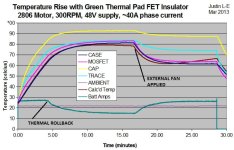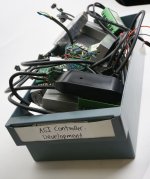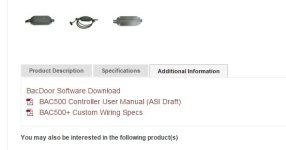Update: This thread is now covering a new device called the PhaseRunner motor controller, based on the 72V compatible BAC800 PCBs
Start reading from this post for the PhaseRunner controller details:
http://endless-sphere.com/forums/viewtopic.php?p=1034905#p1034905
Most recent physical configuration, as of June 2016 (page 31 of this thread)
https://endless-sphere.com/forums/viewtopic.php?f=31&t=65031&start=750#p1195198
Rough draft of the users manual from Sept 2016
http://www.ebikes.ca/documents/PhaserunnerDraft.pdf
While this post has the new Grin software package for tuning the controller
https://endless-sphere.com/forums/viewtopic.php?p=1133077#p1133077
And if you are interested in learning about the merits of a Field Oriented controller compared to your standard infineon style trapezoidal device, there is plenty of test results to ponder starting around Page3:
http://endless-sphere.com/forums/viewtopic.php?p=981500#p981500
******************************** END EDIT ***************************************
Hi everyone. It's been a few years that we've been playing with the field oriented motor controllers from Accelerated Systems (ASI) in Toronto. These proved super awesome, but underwhelming in the power and aesthetics department for what we were after. So we got a custom run of bare boards made with 2.5 mOhm mosfets (Rather than 10mOhm) and did our own enclosure machining for higher heat capacity, inline installation to bike tubes, and room for additional bus capacitance and a precision shunt for a Cycle Analyst plug. The results are discussed a bit here:
http://endless-sphere.com/forums/viewtopic.php?p=738781#p738781
We've made even more changes since then, including going to a hard coat anodized finish so that there is NO insulating pad between the mosfets and enclosure giving the best possible thermal contact.
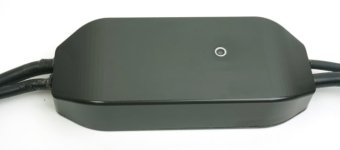
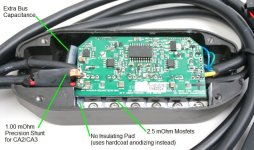
We started off making 50 of these but because of a lot or internal usage and attrition we have only 35 units finished for sale at $295 each. Our plan was to make this a pilot run for a future production product, but since we started ASI has had some changes and has switched to a fully potted board design that isn't quite as attractive or as adaptable. So at this stage it's not clear if we'd be able to make another run quite the same way.
Basic Specs:
Some more pics:
View attachment 5
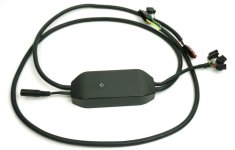

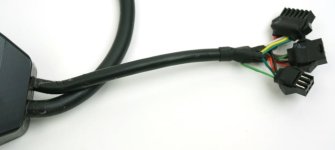
There is a lot of talk about sinusoidal and field oriented controllers on this board which is a good thing to finally see happen. Both sinusoidal and FOC controllers run brushless motors silently with no hum or buzz, but a FOC by definition also automates the phase advance process so that the motor is driven at optimal timing even at very high RPMs. This makes them work well over a broad range of motor types and as a result this has been our go-to controller source for all our interesting EV projects.
[moderator edit to add new link, pg 31)
Start reading from this post for the PhaseRunner controller details:
http://endless-sphere.com/forums/viewtopic.php?p=1034905#p1034905
Most recent physical configuration, as of June 2016 (page 31 of this thread)
https://endless-sphere.com/forums/viewtopic.php?f=31&t=65031&start=750#p1195198
Rough draft of the users manual from Sept 2016
http://www.ebikes.ca/documents/PhaserunnerDraft.pdf
While this post has the new Grin software package for tuning the controller
https://endless-sphere.com/forums/viewtopic.php?p=1133077#p1133077
And if you are interested in learning about the merits of a Field Oriented controller compared to your standard infineon style trapezoidal device, there is plenty of test results to ponder starting around Page3:
http://endless-sphere.com/forums/viewtopic.php?p=981500#p981500
******************************** END EDIT ***************************************
Hi everyone. It's been a few years that we've been playing with the field oriented motor controllers from Accelerated Systems (ASI) in Toronto. These proved super awesome, but underwhelming in the power and aesthetics department for what we were after. So we got a custom run of bare boards made with 2.5 mOhm mosfets (Rather than 10mOhm) and did our own enclosure machining for higher heat capacity, inline installation to bike tubes, and room for additional bus capacitance and a precision shunt for a Cycle Analyst plug. The results are discussed a bit here:
http://endless-sphere.com/forums/viewtopic.php?p=738781#p738781
We've made even more changes since then, including going to a hard coat anodized finish so that there is NO insulating pad between the mosfets and enclosure giving the best possible thermal contact.


We started off making 50 of these but because of a lot or internal usage and attrition we have only 35 units finished for sale at $295 each. Our plan was to make this a pilot run for a future production product, but since we started ASI has had some changes and has switched to a fully potted board design that isn't quite as attractive or as adaptable. So at this stage it's not clear if we'd be able to make another run quite the same way.
Basic Specs:
- 75V max (recommended no more than 48V nominal batteries)
- 60A max phase/battery current
- Runs sensored or sensorless, no commutation frequency limit reached yet
- Includes TRS jack for computer connection with TTL->USB cable
- Wired with 6-pin CA3 plug, 3-pin throttle plug, and 4-pin ebrake plug
- Infinite levels of customization and configuration via ASI's BACDoor software suite
- Fully proportional and smooth regenerative braking
- Sealed design with a breathable membrane vent that doubles as LED indicator light port
- Torque or Speed throttle input settings
Some more pics:
View attachment 5



There is a lot of talk about sinusoidal and field oriented controllers on this board which is a good thing to finally see happen. Both sinusoidal and FOC controllers run brushless motors silently with no hum or buzz, but a FOC by definition also automates the phase advance process so that the motor is driven at optimal timing even at very high RPMs. This makes them work well over a broad range of motor types and as a result this has been our go-to controller source for all our interesting EV projects.
[moderator edit to add new link, pg 31)


